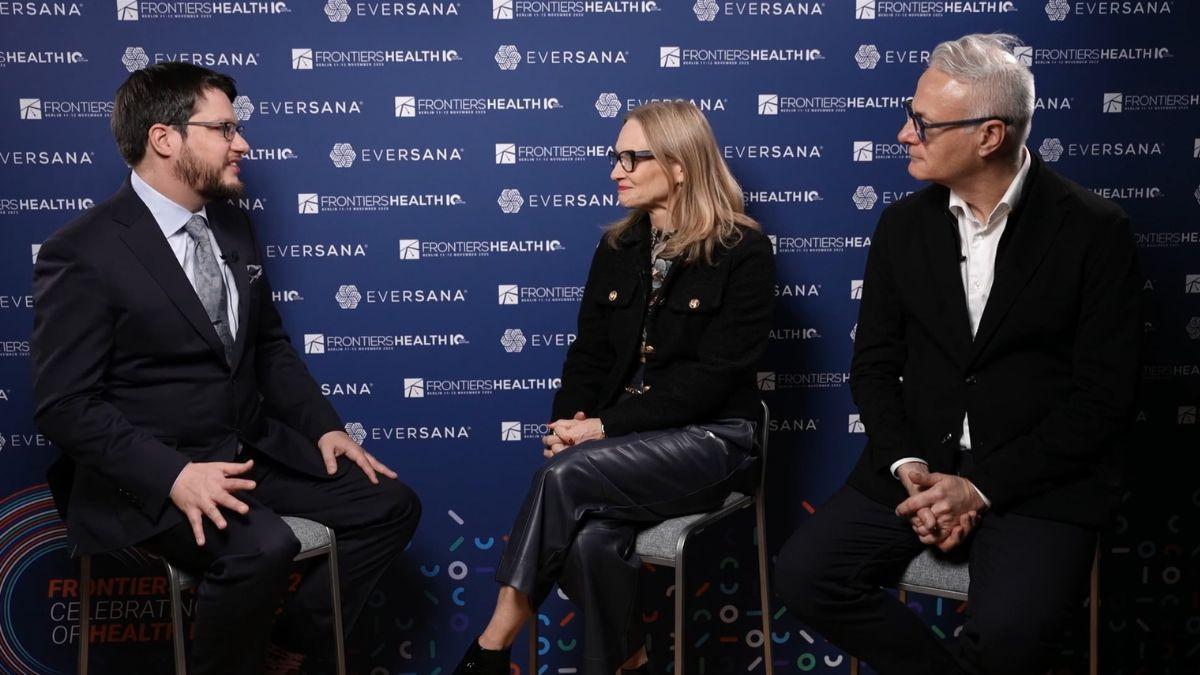Learning from a successful ophthalmology brand launch

As the ophthalmology market becomes more competitive and brands seek successful third-to-market positionings, Portia Gordon and Simon Barnes examine whether learnings from a successful ophthalmology brand launch can be applied to other therapy areas and pharmaceutical brands.


Portia Gordon and Simon Barnes.
First, let’s consider the two general rules of brand building:
1) No problem, no brand
2) One, two, segment.
No problem, no brand
‘No problem, no brand’ means that, unless a new product is solving a problem (rather than just adding a nice-to-have benefit) for its core customer, it will not succeed.
In general, the most motivating solutions exist for problems that are already known. Occasionally a new product can serve a latent need – i.e. offering a solution to a problem that wasn't already known but is instantly recognisable when a solution is offered. This is what the iPod did in consumer markets.
Customers can also be educated about unknown problems. However, if these are not instantly recognisable, the company promoting the new product will need to have very deep pockets if it is to succeed in the much more difficult task of creating the new market.
One, two, segment
The average human brain, though containing more synapse connections than there are stars in the sky (estimated at 100-1,000 trillion), systemically avoids complex decision making. This has been well documented in many papers and popularised by Malcolm Gladwell in his book ‘Blink’. For any one decision, our decision-making capability becomes overwhelmed after two choices, which generally means that, after finding two solutions to a problem, we cease to search for others actively.
In simple terms, our thinking pattern can be defined as ‘one, two, forget the rest’, as seen in the vast array of academic literature discussing the ‘Power of Three’ and the ‘Rule of Three’.
Listen carefully, for example, to politicians when they are making a point. The clever ones will give more than two examples and we therefore accept that they are stating a fact that is overwhelmingly supported, and consequently true.
The ‘Power of Three’ leads to a reductive form of thinking where we ‘zone out’ if we have more than two solutions to any problem.
The implication for marketing is that pharma companies need to identify which new problem their brand can solve, and success is only likely when the brand is either the only one, or one of two solutions.
Looking at this practically, it usually means that, if your brand is not the first or second to market, you need to think again.
What if the brand is third to market?
Many brands are not first or second to market, however, so how can a brand successfully launch as the third brand to market? In our experience, if a brand is third to market, success will be greater as a result of segmentation, i.e. targeting either a patient or clinician segment (usually the former).
There is also another strategy; one that states that the third brand to market becomes a challenger brand. If this strategy is adopted then the challenger brand must solve a problem better than the existing two brands. It can also gain advantage if one of the first two brands to market has been damaged by either efficacy or safety issues, more commonly the latter.
Although few situations qualify for a challenger brand launch – and as a strategy it can often fail – it is by far the most used strategy for third brand pharma launches. It was a strategy adopted by Bayer, for the Eylea brand. (More on this later.)
Why does pharma prefer the challenger brand strategy?
Some senior pharma management teams, without marketing backgrounds, believe that adopting a segmentation strategy would deny the company the opportunity of sales outside the target segments, resulting in missed revenues.
The truth is that, rather than segmenting and owning a place in the minds of a sub-group of patients or doctors, and then expanding into other groups, a challenger brand strategy will rarely gain sales that are more than one quarter of even the second-to-market brand’s sales.
Also, third-to-market challenger brands will often compound this problem by being a challenger based solely on price, not only reducing profits, but still not achieving more than a quarter of second-to-market sales.
Look at third-to-market proton pump inhibitors (PPIs) in reflux, third-to-market erectile dysfunction (ED) treatments and third-to-market anti-tumour necrosis factors (TNFs) in rheumatoid arthritis. These examples demonstrate a failure to capture more than a quarter of the market upon entrance and have not truly displaced first- or second-to-market competitors.
Eylea - learning from successful launches via challenge in ophthalmology
Challenger brands can work, though, if the circumstances are right. Consider ophthalmology (specifically wet age-related macular degeneration [AMD], the leading cause of age-related blindness) and the third-to-market launch of Eylea as a challenger brand.
At the time of Eylea’s launch, the market comprised laser-activated photodynamic therapies (PDTs) (e.g. Visudyne), and anti-VEGF’s Lucentis, developed and marketed in the US by Genentech and marketed in the rest of the world by Novartis, and off-label Avastin (developed by Genentech).
Lucentis dominated the market and was – and is – well respected for innovation. Lucentis’ position was, however, weakened because of its association with Genentech and its resistance to gaining a licence for Avastin. Both of these points left doctors in the awkward position of not wanting to take the risk of off-label usage to gain the benefits for their patients (and the health service) of the much lower cost treatment of Avastin.
Consequently, the normal two-brand stranglehold was significantly weaker in wet AMD, which left more room for a challenger brand.
Bayer, with less experience and fewer credentials in ophthalmology, decided, nevertheless, that the market had one strong and one weak brand and therefore it could successfully challenge the Lucentis/Avastin dominance with Eylea, given the Avastin brand weakness.
A launch ensued, which focused on Eylea's non-inferior efficacy and safety compared to Lucentis, and differentiation due to its every-other-month dosing and dual MoA (trapping mechanism binding VEGF-A and PlGF). This positioned Eylea as a convenient solution compared to Lucentis.
Bayer gained a brand share of 32% for Eylea, which is much greater than the usual 25% for a second-brand share. In fact, Eylea’s strong sales trajectory since 2013 has established Regeneron’s strong position in the US ophthalmology market – its only marketed brand in this therapy area. Eylea’s broad indication, as well as current phase 3 trials in diabetic retinopathy without DME and phase 2 trials in combination with nesvacumab for wet AMD and DME, will probably ensure an unabated sales increase.
The moral of the story: what can we learn for other therapy area brand launches?
First, in certain circumstances it is beneficial, when third to market, to launch as a challenger brand, rather than based on segmentation. These circumstances are defined by one of the two dominant brands having a weakness – in the case of the AMD market, these were: being unsupported and having some negative emotional connections.
Second, the weakness does not necessarily need to be targeted directly. Eylea made its superiority case by targeting a different problem, that of convenience, rather than by positioning itself against a specific Lucentis weakness specifically.
The moral of the story for pharmaceutical market brand launches is not to try to be a David and take on a Goliath unless you are supremely confident that you are fighting from a good vantage point and you have clear evidence of your opponent's weakness.
In other words, become a challenger brand – like Eylea – only if you can solve customers’ problems significantly better than the two dominant brands. If not, launch with a segmentation strategy instead.
About the authors:
Portia Gordon, PhD, is Research Director at THE PLANNING SHOP, specialising in US and global qualitative market research. With a background in molecular pharmacology and biochemistry, she has over 17 years’ experience in pharmaceutical marketing research. Portia has an active interest in engaging patient participation to educate patients about therapeutic breakthroughs in medicine, and is part of the company’s patient group team.
Simon Barnes is Research Director at THE PLANNING SHOP with a focus on market research in the UK, covering all therapeutic areas. He has worked in pharmaceutical market research for over 20 years across several different therapeutic areas, including eye care in an international role. He leads the Ophthalmology Business Unit alongside his UK-specific role.
Read more:
Rare disease market research needs a multifaceted approach












